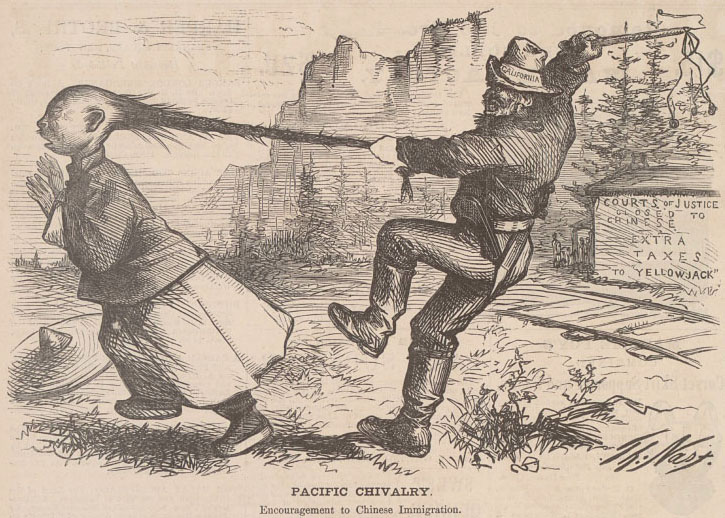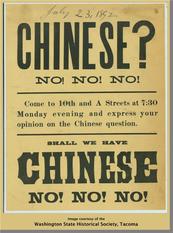Today, we live in the diverse melting pot known as America, but it hasn’t always been this way. Those that came before us had to make enormous sacrifices, ones that paved the way for us – the children of immigrants – to enjoy the privileges that we do today. So, as part of Asian Pacific American Heritage Month, let’s take it allll the way back. Currently, there are over 20 million people of Asian descent in America, but how did we all get here?
Asians, primarily Filipinos, Chinese, and Indians, came to the U.S. as early as the 1500s, but it wasn’t until the 1800s that the first wave of mass immigration of Asians began, with the Chinese being the first to come to America in droves. In the 1840s, China was plagued with widespread poverty, economic instability, and starvation. As tales of this magical land called America made its way to China, naturally many were drawn to it by the promises of prosperity that came with the Gold Rush and the prospect of finding jobs that weren’t available at home. As a result, thousands of Chinese people – mostly men – left for America in search of greater wealth, but what they encountered in the supposed “land of opportunity” was more than they had bargained for.
When the Chinese arrived, the majority of them settled on the West Coast – mostly California, but other western states as well. To this day, the Golden State is home to a large population of Asian Americans, many who are the descendants of these early immigrants. While at first, they were welcomed because they were willing to take on jobs that nobody wanted in exchange for low pay, this sentiment changed among white Americans as the number of Chinese immigrants increased and the gold that was initially found everywhere became more scarce. In the late 1840s, there were just over 300 Chinese people in America, but by the 1880s, that number increased exponentially.
As the number of Chinese immigrants increased, unfortunately, so did the racism against these individuals that white Americans regarded as “foreign, degraded, inferior, and dangerous”. Sometimes, this racism was in the form of taking away rights and resources from the Chinese. They were taxed a special foreign miner tax, which took away approximately half of their income each month. To add insult to injury, they were not allowed to marry interracially or become U.S. citizens.
Many other times, this racism turned violent. In 1887, a gang of white men ambushed a group of 34 Chinese miners, attacking, torturing, mutilating, and killing them, in an event that became known as the Snake River Massacre. Although it was one of the deadliest crimes against Asians during this time period, the Snake River Massacre was far from being the only one. Miners were constantly attacked, assaulted, killed, and robbed of their gold. If the miners couldn’t pay the foreign miner tax, they were often shot or stabbed by the tax collectors. As crimes against the Chinese continued, it became illegal for anyone Chinese to testify in court against a white person, and as a result, most crimes against Chinese people went unpunished.
This anti-Chinese sentiment grew and continued well into the early 1900s. In fact, the Chinatowns across the nation that we now see as beautiful meccas of Chinese culture were first established because the Chinese people had nowhere else to go. They flocked to neighborhoods where they could find safety in numbers to protect themselves from violence by Americans, as well as to find an escape from the constant harassment and discrimination.
As the Gold Rush died down and the mining industry became obsolete, the Chinese immigrants had to find a source of money elsewhere. Some turned to the agriculture industry or worked for fisheries. Others worked as servants, housekeepers, or laborers, or opened their own laundry and restaurant businesses. Eventually, many of them were recruited as railroad workers, which paved the way for the Chinese to work on the transcontinental railroad, another integral chapter in Asian-American history.
4,215 total views, 0 views today




